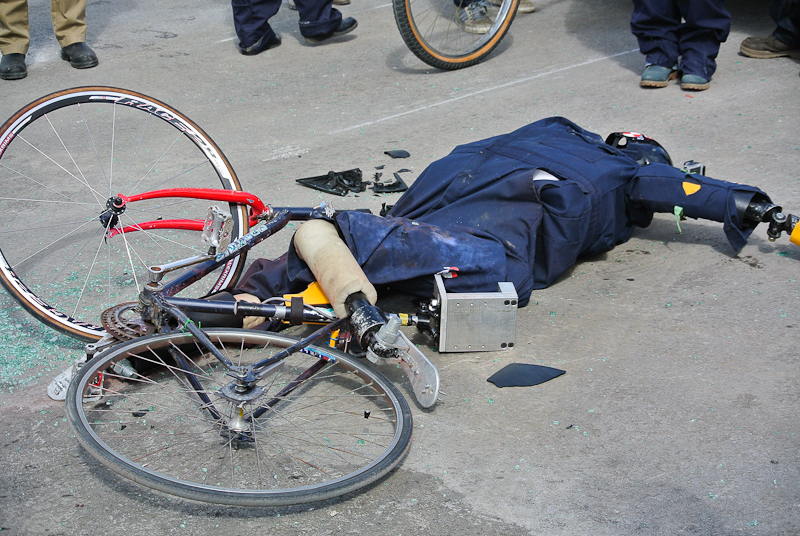
Students from Carleton and Algonquin College partnered with Ottawa police to hold a cyclist-automobile crash test simulation at the National Research Council of Canada on March 25.
After three failed attempts, the dummy cyclist and car made impact.
The dummy, moving at roughly 25 kilometres per hour, struck the side of the moving vehicle, providing an opportunity for cyclist collision data collection.
Brigitte Babin, a fourth-year biomedical engineering student at Carleton, said the year-long project is an application of four years of study, as well as a continuation of a student’s project to gain more information about cyclist collisions from last year.
Babin said although the project was already underway at the time, the death of 27-year-old Krista Johnson in a cycling accident on Bronson Avenue in September encouraged the group project.
“It really reaffirmed that what we’re doing is important,” she said.
Alain Boucher of Ottawa Police Service said he approached Carleton in the hopes of facilitating the collision after seeing an article about last year’s test dummy project.
“It’s a learning experience for all partners,” he said.
Boucher said that sometimes there are no witnesses to provide evidence about collisions.
“There’s very little study done on collisions involving cyclists,” he said. “By watching this occur, and by analyzing evidence, it will help us to investigate collisions similar to this.”
Boucher said although the police will need some time to analyze video footage and evidence before releasing any data, he is confident the simulation itself was representative of what would occur on a street.
According to the Carleton website, “on average, there are 311 reported collisions involving vehicles and cyclists each year in Ottawa. Between 2007 and 2011, there were 1,556 vehicle/cyclist collisions, with 1,253 injuries and 12 fatalities.”
Last month, the City of Ottawa transportation committee unveiled proposals to conceptually change Bronson Avenue. Proposed changes included creating a buffer zone between cyclists and motorists, increasing pedestrian and cyclist crossing time, and installing new signs.
Although preventative measures are being taken, Boucher said cyclist-vehicle accidents will inevitably occur.
It is in cases like those that police can apply the knowledge they learned at this simulation, Boucher said.





